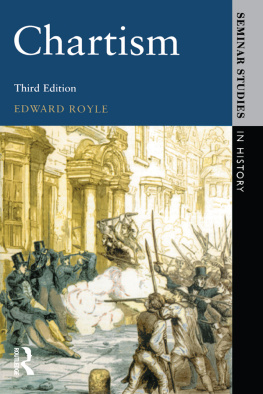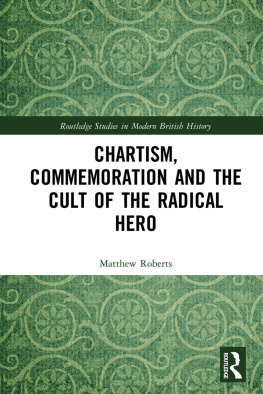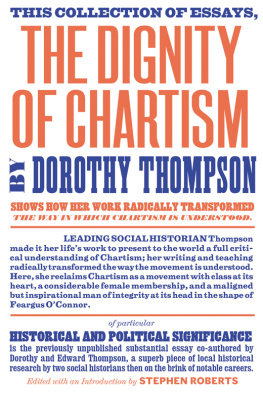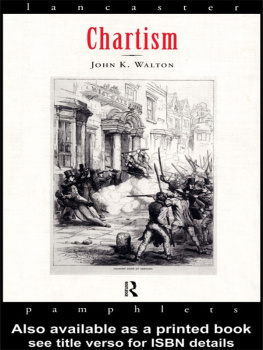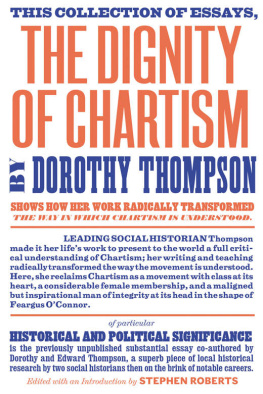First published 1980 by Pearson Education Limited
Second Edition 1986
Third Edition 1996
Published 2014 by Routledge
2 Park Square, Milton Park, Abingdon, Oxon OX14 4RN
711 Third Avenue, New York, NY 10017, USA
Routledge is an imprint of the Taylor & Francis Group, an informa business
Copyright 1980, 1996, Taylor & Francis.
All rights reserved. No part of this book may be reprinted or reproduced or utilised in any form or by any electronic, mechanical, or other means, now known or hereafter invented, including photocopying and recording, or in any information storage or retrieval system, without permission in writing from the publishers.
Notices
Knowledge and best practice in this field are constantly changing. As new research and experience broaden our understanding, changes in research methods, professional practices, or medical treatment may become necessary.
Practitioners and researchers must always rely on their own experience and knowledge in evaluating and using any information, methods, compounds, or experiments described herein. In using such information or methods they should be mindful of their own safety and the safety of others, including parties for whom they have a professional responsibility.
To the fullest extent of the law, neither the Publisher nor the authors, contributors, or editors, assume any liability for any injury and/or damage to persons or property as a matter of products liability, negligence or otherwise, or from any use or operation of any methods, products, instructions, or ideas contained in the material herein.
ISBN 13: 978-0-582-29080-8 (pbk)
British Library Cataloguing-in-Publication Data
A catalogue record for this book is
available from the British Library
Library of Congress Cataloging-in-Publication Data
Royle, Edward.
Chartism / Edward Royle. -- 3rd ed.
p. cm. -- (Seminar studies in history)
Includes bibliographical references and index.
ISBN 0-582-29080-5
1. Chartism. I. Title. II. Series.
HD8396.R64 1996
| 322..20941--dc20 | 96-7738 |
| CIP |
Set by 7 in 10/12 Sabon Roman
Such is the pace of historical enquiry in the modern world that there is an ever-widening gap between the specialist article or monograph, incorporating the results of current research, and general surveys, which inevitably become out of date. Seminar Studies in History are designed to bridge this gap. The books are written by experts in their field who are not only familiar with the latest research but have often contributed to it. They are frequently revised, in order to take account of new information and interpretations. They provide a selection of documents to illustrate major themes and provoke discussion, and also a guide to further reading. Their aim is to clarify complex issues without over-simplifying them, and to stimulate readers into deepening their knowledge and understanding of major themes and topics.
ROGER LOCKYER
Readers should note that numbers in square brackets [5] refer them to the corresponding entry in the Bibliography at the end of the book (specific page numbers are given in italics). A number in square brackets preceded by Doc. [Doc. 5] refers readers to the corresponding item in the Documents section which follows the main text.
In the preparation of this work I have been greatly assisted by many librarians, especially those at the Manchester Central Library, the British Library, and the Public Record Office. I am also grateful to several generations of students whose insights and errors have alike helped me construct this book, and to countless historians on whose shoulders I sit and whose wisdom is only lamely acknowledged in the bibliography. In writing and revising this book I have been particularly conscious of the debt owed by all recent historians of Chartism to the ideas of Dorothy Thompson, who will no doubt disagree with much in this study and yet whose influence I acknowledge with gratitude. I have taken the opportunity of a third edition to extend and bring up to date the bibliography and to redraft the text, revising my interpretation where necessary to take account of recent research by myself and others. The principal changes of emphasis over the eighteen years since the first edition was drafted concern the treatment of the Newport rising, the role of the state, Chartist culture, and the Land Plan. The conclusion has been rewritten to set out more clearly recent interpretations of Chartism, though the overall view implied in my treatment of the subject remains substantially unchanged.
ABBREVIATIONS
| ACLL | Anti-Corn Law League |
| Add. Mss | Additional Manuscripts |
| BPU | Birmingham Political Union |
| CSU | Complete Suffrage Union |
| LDA | London Democratic Association |
| LWMA | London Working Mens Association |
| NCA | National Charter Association |
| NUWC | National Union of the Working Classes |
| PRO | Public Record Office |
Britain in the first half of the nineteenth century was the scene of unprecedented economic and social change: so much so that in the 1840s Friedrich Engels could describe what was happening as comparable to the political upheaval in the French Revolution of 1789 [5]. Indeed, industrialisation, urbanisation and pressure of population growth were transforming the face of the countryside and the lives of the people from decade to decade more surely than any political upheaval. The old certainties were being swept away before the march of material progress.
This was the image. The reality was different in two respects. First, the picture of an industrial revolution sweeping the whole of Britain is a grossly exaggerated one by any modern standards; secondly, many of those men and women who were experiencing this revolution were far from convinced that the new society was an improvement on the old.
The industrial revolution made its greatest impact on those parts of the country having exposed coalfields with readily available supplies of both coal and iron. Here, in South Wales and Central Scotland, in the West Midlands and South Lancashire, in the West Riding and on Tyneside, a new human geography was being created, with a new technology, new concentrations of industry and population, and new social relationships. With larger units of production and improved communications, regional specialisation was becoming more marked: cotton manufacture in South Lancashire and the Glasgow area; the metal trades in the West Midlands and South Yorkshire; lace and hosiery production in the East Midlands; worsted manufacture around Bradford in the West Riding at the expense of East Anglia; and woollen production, generally in West Yorkshire at the expense of the West Country. Rural industries everywhere were slowly succumbing to the competition of the towns [16].
Even so, small units of production were still more common than really large-scale enterprises. The typical textile factory in cotton or worsted production had a hundred or so workers; few had over a thousand; and in the woollen industry the average size of workforce was nearer fifty. The backyard workshops of the Black Country were more typical of the metal trades than large concerns such as those at Dowlais in South Wales or Carron in Scotland. Only a small proportion of the total labour force, even in 1851, worked in factories, and the days of the handloom weaver, though numbered, were still far from over, especially in the woollen trade. The largest manufacturing centre was London, which had scarcely any large-scale industry. What was new here, and in the experience of artisans throughout the country, was not the scale of the unit of production but the organisation of production. Increasingly, capitalists, through their control of raw materials and marketing, were able to control the conditions and remuneration of labour, and exploit unregulated and unskilled labour to the detriment of many of the traditionally skilled [84; 89].


